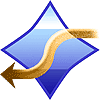| Class Time Required | 4 - 5 class periods |
| Materials Needed |
|
| Teacher Preparation |
60 minutes to read, view web sites, copy and prepare materials |
| Prior Student Knowledge |
|
| Vocabulary | Algae, Baleen, Blubber, Consumer, Copepod, Decompose, Ecosystem, Food Chain, Holdfast, Intertidal , Invertebrates, Kelp, Microbe, Organism, Pelt, Phytoplankton, Predator, Producer, Recolonize, Scavenger, Subtidal, Tally, Transient, Underfur, Urchin, Zooplankton |
| Science GLEs Addressed |
3rd grade: SA3.1, SC3.1, SC3.2 4th grade: SC2.2, SC3.1, SC3.2 5th grade: SA3.1, SC3.1, SC3.2 |
| Other GLEs Addressed |
![]() Overview: In this 4-5 day investigation, students begin by reading a mystery story about sea otters in the Aleutian Islands, and examining an accompanying population graph. They identify information that they will need to help them solve the missing sea otter mystery, and explore ecological relationships in the sea otter environment using Web sites, video clips, and readings. Information is shared with the class and/or summarized on clue cards, and students then create murals showing the sea otter/kelp bed ecosystem.
Overview: In this 4-5 day investigation, students begin by reading a mystery story about sea otters in the Aleutian Islands, and examining an accompanying population graph. They identify information that they will need to help them solve the missing sea otter mystery, and explore ecological relationships in the sea otter environment using Web sites, video clips, and readings. Information is shared with the class and/or summarized on clue cards, and students then create murals showing the sea otter/kelp bed ecosystem.


 Overview: Overview: In this 7-9 day investigation, students are engaged in a variety of hands-on demonstrations and experiments that will help them to understand thermohaline circulation in the ocean. They begin with an introductory activity that helps them to review or arrive at a definition of density, then go on to demonstrate the effects of temperature and salinity on density and design their own experiment to simulate ocean mixing. They experiment further with hot and cold water as they consider the effects of tropical and polar climates on ocean currents, and end by writing conclusions to summarize their learning.
Overview: Overview: In this 7-9 day investigation, students are engaged in a variety of hands-on demonstrations and experiments that will help them to understand thermohaline circulation in the ocean. They begin with an introductory activity that helps them to review or arrive at a definition of density, then go on to demonstrate the effects of temperature and salinity on density and design their own experiment to simulate ocean mixing. They experiment further with hot and cold water as they consider the effects of tropical and polar climates on ocean currents, and end by writing conclusions to summarize their learning.





